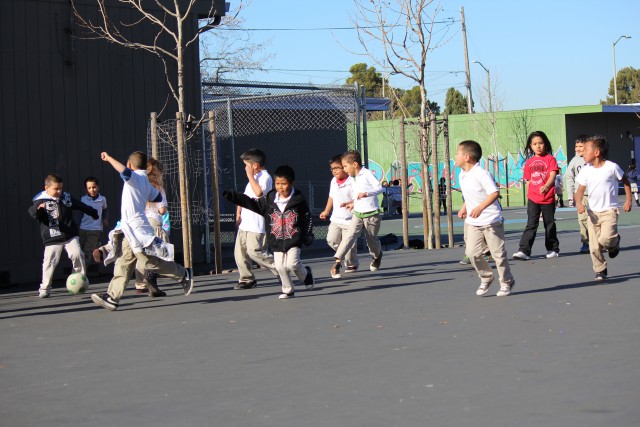All parties in the lawsuit have asked San Francisco Superior Court Judge Mary Wiss to grant final approval to the settlement, which is expected by late March. Babin is president of Cal200, which advocates for physical education; it takes its name from the 200-minute physical education requirement.
What began as a quest in 2009 by Driscoll to ensure that his 3rd-grade son was receiving state-mandated physical education time at Albany’s Cornell Elementary School has developed into a series of lawsuits filed by Driscoll, Babin and Cal200 to ensure that all elementary school students in the state are receiving the physical education instruction they are entitled to by law.
Public health advocates, physical education teachers and the California Legislature have long urged districts to comply with physical education requirements, but those requirements are “rarely enforced,” according to a 2008 report, “Physical Education Matters,” by researchers at San Diego State University. The California Department of Education includes an evaluation of physical education in its cycle of compliance monitoring of districts, but according to the researchers at San Diego State, “There are no real consequences for failure to comply.”
A key legal turning point occurred during a 2009 lawsuit Driscoll filed against Albany Unified. When the district argued that the Education Code requirement of 200 minutes of physical education every 10 days was a goal and a guideline, not a mandate, a Sacramento Superior Court judge agreed and dismissed the case. But the California Third District Court of Appeals overturned that judgment and ruled that physical education requirements were a mandate, not a suggestion.
New Suit Filed Against Oakland Unified and Other Districts
Driscoll then teamed up with Babin, a retired investigator with the California Department of Insurance. Babin declined through Driscoll to be interviewed. But Driscoll said Babin likes the investigative challenge of the cases. “In a sense it’s an extension of the sorts of things he did as an investigator for the state,” he said.
They began to look into physical education instruction compliance in elementary schools across the state.
“I thought it was important to speak up not just for my son’s school but for the schools of other people’s kids,” Driscoll said.
They have no plans to stop.
“He’s just going to keep going after folks,” said Michael Fine, deputy superintendent for the Riverside Unified School District, one of the districts named in the lawsuit, Cal200 and Marc Babin v. San Francisco Unified School District et al. Asked if he was referring to Driscoll or Babin, Fine said, “Both. I think they’re going to pick off groups of districts.”
That appears to be happening already. In November, Babin and Cal200, represented by Driscoll, filed suit against Oakland Unified School District et al., alleging that Oakland and other districts, which are to be named at a later date, are not compliant with elementary school physical education requirements.
Insurers have put school districts on notice. In 2013, the Alliance of Schools for Cooperative Insurance Programs, a public agency that provides insurance to about 100 California school districts, sent out a “risk alert” that Cal200 and Babin “are seeking additional districts” to sue. Districts should be prepared to prove they are providing the required minutes of physical education or that they have an action plan to do so, the alert stated.
Under the settlement agreement, elementary school teachers in the districts must report the minutes they spend teaching physical education, publish the schedule to parents and be subject to spot checks from principals. If teachers skip scheduled physical education instruction, they will note the reason why and report when those minutes were made up. The schedules will be submitted to local school boards for review.
While no one disputes the value of exercise in children’s development, budget cuts have reduced or eliminated credentialed physical education teaching positions in many elementary schools. As a result, classroom teachers are asked to squeeze in physical education while simultaneously improving academic test scores.
Jane Meredith Adams covers student health and well-being for EdSource.
